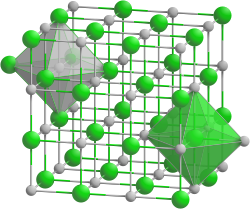 | |
| Names | |
|---|---|
Other names
| |
| Identifiers | |
3D model (JSmol) | |
| ChemSpider | |
| ECHA InfoCard | 100.031.763 |
| EC Number |
|
PubChem CID | |
CompTox Dashboard (EPA) | |
| |
| |
| Properties | |
| PrAs | |
| Molar mass | 215.83 g/mol |
| Density | 6.6 g/cm3 |
| Related compounds | |
Other anions | PrN, PrP, PrSb, PrBi, Pr2O3 |
Other cations | CeAs, NdAs |
Except where otherwise noted, data are given for materials in their standard state (at 25 °C [77 °F], 100 kPa). | |
Praseodymium arsenide is a binary inorganic compound of praseodymium and arsenic with the formula PrAs.
